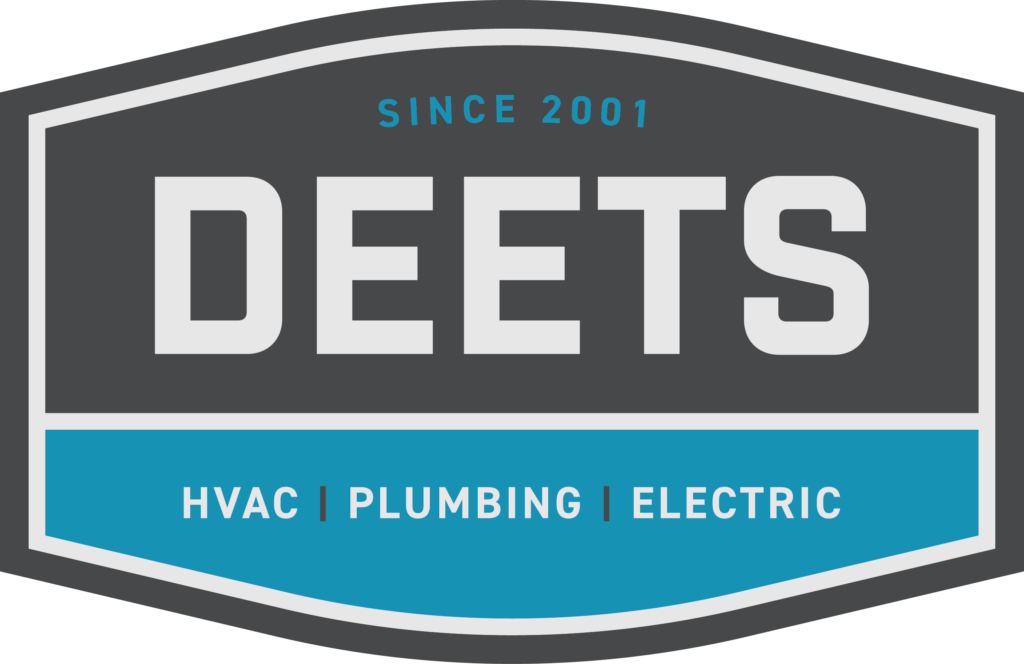In this article…
- What Causes Cold Spots in the Home?
- How To Reduce Cold Spots In My Home (8 Tips)
- When To Call a Professional HVAC Company
- Caring For Your HVAC System and Staying Warm All Winter Long
Do you ever walk from one room in your home to another and suddenly feel an unexpected chill? Maybe it’s a room with more windows or on a corner of your home, or maybe your ductwork isn’t properly circulating warm air throughout your home.
No matter where cold spots occur in your home, it’s an annoying inconvenience and one that can usually be prevented with some easy tips and tricks.
From using insulating curtains to scheduling professional duct cleaning, there are several ways you can eliminate cold spots in your home and stay comfortable all winter long.
At DEETS Mechanical, we’re here to help all homeowners in Northwestern Pennsylvania stay warm with efficient HVAC solutions, and we’ve been doing it since 2001.
No matter your heating and cooling needs, we’re not only here to provide you with the right answers but to educate you on all you need to know.
Even if you don’t need professional repairs, we want to provide you with the best tips and tricks regarding your HVAC system so you can stay cozy without the hassle of working with a professional.
So, if you’ve noticed cold spots throughout your home, you want to know how to fix them fast.
This article will go through why cold spots happen, how you can fix them, and what you can do to best prevent them from coming back.
What Causes Cold Spots in the Home?
Before getting to how to eliminate cold spots in your home, you first need to understand why they occur and what could possibly be causing them.
There are several factors that can contribute to cold spots in your home, such as:
- Insulation Issues: Gaps or inadequate insulation in walls, ceilings, or attics allow heat to escape, resulting in cold spots in certain areas.
- Air Leaks: Cracks around windows, doors, or where walls meet can let in cold air, disrupting your home’s temperature balance.
- Leaky Ductwork: Leaks in ducts or poorly sealed connections cause uneven air distribution, which can leave certain rooms colder than others.
- Blocked Vents: If furniture or other obstructions block vents, it restricts the airflow, leading to cold spots in specific areas.
- Improper Thermostat Placement: A thermostat located in a warm spot of the house may not accurately reflect the temperature in cooler areas, causing your system to overheat certain rooms while ignoring others.
- Old or Inefficient Windows: Single-pane windows, poorly sealed windows, or old windows can let cold air in, creating cold spots near windows.
- Clogged Air Filters: A dirty or clogged air filter can restrict airflow, leading to temperature inconsistencies throughout the home.
Each of these common causes not only creates cold spots in your home but also reduces the efficiency of your entire HVAC system.
Identifying cold spots in your home could mean a larger problem is at hand. If you have any doubts or suspect a bigger issue with your system, it’s always best to consult a trustworthy HVAC company.
How To Reduce Cold Spots In My Home (8 Tips)
When you notice a cold spot in your home, it’s a frustrating feeling. While utilizing space heaters or bundling up with blankets is one solution, you want to eliminate these cold spots completely.
To avoid cold spots, there are a few DIY steps you can take to improve your heating system’s efficiency.
1. Change Your Air Filters Regularly
Dirty filters reduce airflow, making it harder for your system to heat your home efficiently. Make sure to regularly inspect your air filters and change if needed.
1” filters should be replaced every 30 days, while 2” filters can last 60-90 days. Thicker media filters can last 6-12 months, however factors like pets and number of household members may mean you need to replace your filters more often.
2. Seal Drafts
Use weather stripping around doors and windows to prevent cold air from sneaking in. You can also use caulk for cracks in walls and around window seals.
This will help reduce cold air from entering your home and keep your rooms warm.
3. Adjust and Unblock Vents
Ensure that vents are fully open and not obstructed by furniture or other items. Blocked vents can significantly reduce airflow and create cold spots.
*Even if you have rooms you don’t use, remember not to fully close vents, as this can create pressure in your ductwork and strain the system.
4. Inspect Insulation
Check your attic and walls for gaps or areas with failing or inadequate insulation. Adding insulation can help prevent heat loss in areas where you need it.
5. Install Window Coverings
Insulating curtains or blinds help trap heat and keep drafts out, especially during the colder months.
Close curtains at night to trap heat and open curtains during the day to allow natural sun heat to enter your home.
6. Adjust Ceiling Fans
Ceiling fans should rotate clockwise in the winter to push warm air down towards the floor, helping to distribute heat evenly.
While this won’t completely rid cold spots, it will help circulate warm air throughout a room and improve comfort.
7. Thermostat Placement
Ensure the thermostat is in a central, neutral location, away from heat sources (like direct sunlight or vents) and drafts.
8. Check Ductwork for Leaks
Inspect your ducts for any visible leaks or damage. Minor leaks and gaps can be sealed with aluminum tape to prevent air loss.
Larger leaks or separations in your ductwork will most likely need professional help.
When to Call a Professional HVAC Company
While DIY fixes can help with minor cold spots, some issues may require the expertise of a professional HVAC technician. Here are a few signs it’s time to call for help.
- The issue is complex: If you can’t identify the cause of your cold spots, it may be time for a professional inspection to look for leaks in the ductwork or other system-related problems.
- You need a full HVAC inspection: A technician can perform a full evaluation of your heating system, ensuring it’s running efficiently, and identifying any underlying issues like zoning problems or inefficient airflow.
- You need major repairs: If you need major repairs, such as sealing large ductwork leaks, adding insulation to your home, or installing new components to address ventilation, it’s best to leave it to the experts.
It’s also best to have regularly scheduled duct cleaning to clear your ducts from dust buildup and improve airflow.
Caring For Your HVAC System and Staying Warm All Winter Long
Now that you know how and why cold spots occur and the best ways to mitigate them, you can improve your HVAC system’s efficiency and keep your entire home warm and cozy.
DIY steps like adjusting vents, cleaning filters, and checking ducts can prevent many common causes of cold spots. Sealing drafts and ensuring proper insulation can also drastically improve and regulate the temperature throughout your home.
Overall, regular HVAC maintenance is essential for keeping your system running efficiently and preventing cold spots from returning.
Professional inspections are the best way to check up on the health of your system and address larger, complex issues like ductwork problems, major repairs, or persistent cold spots.
By addressing these issues proactively, you can ensure your heating system works efficiently and keep your home warm and comfortable all winter long.
At DEETS Mechanical, we’re here to help you stay cozy and avoid potential problems with your heating system, whether that requires professional help or just simple tips and tricks.
As Northwestern Pennsylvania homeowners ourselves, we understand that sometimes, the last thing you want to do is call an HVAC company to come out to your home and perform maintenance.
While at times professional HVAC maintenance is necessary, there is a lot you can do as a homeowner to care for your system and ensure it performs as it should.
Whether you’ve experienced cold spots in your home or not, it’s essential to understand common reasons why your heating system isn’t functioning properly and how you can easily troubleshoot them.
Check out this article that outlines 11 common reasons why your heater may be shutting off and how you can try to fix them. Then, you can keep your heat running through winter without immediately needing to call a professional.



